Guide to Summer Lawn Care in Austin, TX
BY NICKI DESTASI | JUNE 3RD, 2019 | AUSTIN, LAWN CARE, TEXASAustin temperatures climb as spring turns into summer and rainfall becomes scarce. Add inconsistent soil and constant city construction, and maintaining a healthy lawn isn’t easy. It takes hard work and vigilance. However, if you follow our guide to summer lawn care in Austin, you can rest easy knowing you’re giving your lawn a fighting chance.
In this article, we’ll cover:
- Choose the Best Grass Type for Your Austin Lawn
- Know Your Soil and Fertilize it Appropriately
- Best Watering Practices for Your Austin Lawn
- Best Mowing Methods for Austin Grass
- Aerate and Dethatch Your Austin Lawn
- Handle Austin Pests
- Deal With Austin Turfgrass Diseases
- Wipe Out Austin Weeds
What Makes Summer Lawn Care in Austin Important?
With an average temperature of 96 degrees Fahrenheit and only three days of rain in July and August, it’s safe to say Austin’s summers are hot and dry. Both heat and low rain stress your lawn, making it vulnerable. Proper summer lawn maintenance–like watering, mowing, dealing with pest or disease problems, and more–is vital to a healthy, vibrant, backyard party-worthy lawn.
8 Tips for Summer Lawn Care in Austin
The best lawn care maintenance plan starts with understanding your soil and choosing the best type for your lawn. From there, fertilize when needed, aerate, dethatch, and maintain your grass with good watering and mowing practices. Fall all this up by protecting your lawn from ugly, Austin lawn problems, like pests, diseases, and weeds.
1. Choose the Best Grass Type for Your Austin Lawn
With the high temperatures and low rainfall, warm-season grass types thrive in Austin lawns. However, warm-season grasses go dormant in the fall and winter, so mixing in cool-season grass cultivars allows Austinites to have a gorgeous, green lawn year-round. Here are some of the best grass types for Austin lawns.
Warm-Season Grass Types
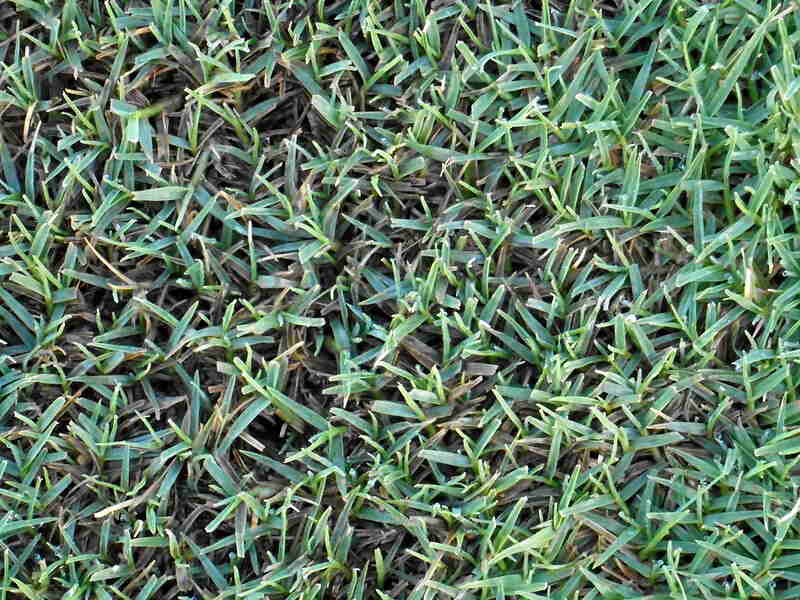
Photo Credit: Scot Nelson / Flickr / CC0 1.0
Warm-season grasses thrive in regions with hot summers and mild winters. Winter temperatures stress warm-season grasses, and when temperatures drop, these cultivars go dormant and turn brown.
Bermudagrass
Light-green and fine-textured bermudagrass is a popular choice. This fast-growing grass is used in home lawns, sports fields, and parks.
Pros
- Excellent drought tolerance
- High traffic tolerance
- Low to moderate disease potential
Cons
- Low shade tolerance
- Moderately high maintenance
Augustinegrass
St. Augustinegrass grows quickly, creating a thick, coarsely textured, dark green lawn. Its nickname is “carpet grass” thanks to its dense appearance.
Pros
- Good drought tolerance
- High shade tolerance
- Less vulnerable to insects than most other grasses
Cons
- Low traffic tolerance
- High disease potential
Buffalograss
Buffalograss is soft, fine-textured, and gray-green or blue-green. Although slow-growing, it won’t invade flower beds like many fast-growing grass types.
Pros
- Excellent drought tolerance
- Goes dormant later than most other warm-season grasses
- Very low water needs
Cons
- Low shade tolerance
- Low traffic tolerance
Zoysiagrass
Zoysiagrass is light to medium emerald green with medium to fine leaf texture. It grows quickly and stays green longer than most warm-season grass types.
Pros
- Low to moderate disease potential
- Very good drought tolerance
- Moderate to high traffic tolerance
Cons
- Slow traffic damage recovery
- Moderate maintenance required
Seashore Paspalum
Like bermudagrass, seashore paspalum is light to medium green with a fine leaf texture. It has a dense root system and grows quickly.
Pros
- Low to moderate disease potential
- Good drought tolerance
- Moderate to high traffic tolerance
Cons
- Low shade tolerance
- Vulnerable to billbugs, mole crickets, and nematodes
Cool Season Grass Types
While cool-season grasses grow in the North, preferring cold winters and mild summers, they also thrive in the mild Southern winters. Heat is the major hurdle for cool-season grasses, so they need more energy to stay green when temperatures rise. Eventually, they’ll go dormant in the summer.
Perennial Ryegrass
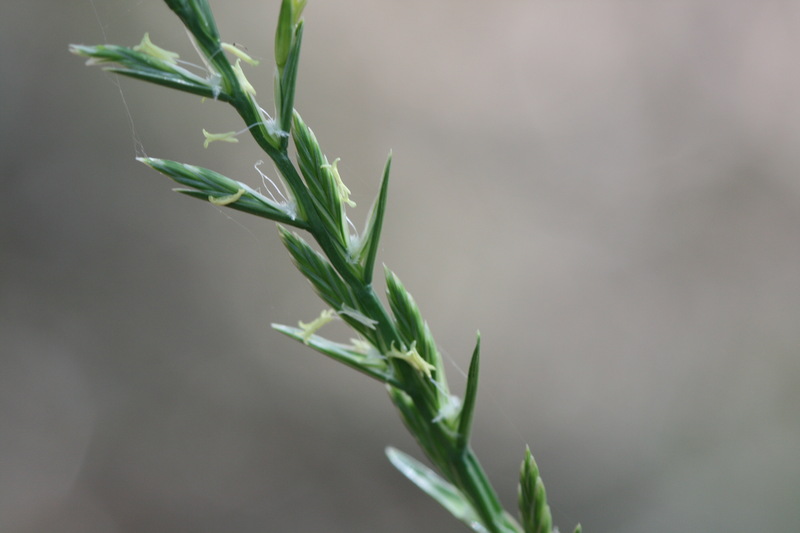
Photo Credit: Arthur Chapman / Wikimedia Commons / CC BY-2.0
Perennial ryegrass is a fine-textured, medium-green grass. Along with lawns and golf courses, it’s popular for construction areas. It is often used to prevent erosion because of its fast germination rate.
Pros
- Pest resistant
- High traffic tolerance
- Establishes quickly
Cons
- Vulnerable to some diseases like dollar spot and brown patch
- Low shade tolerance
Texas Bluegrass
A hybrid between Kentucky bluegrass and Texas native grass, Texas bluegrass remains green in the summer. Its dark green color lasts longer than most cool-season grasses. This turfgrass is fine-textured and densely growing.
Pros
- Good traffic tolerance
- Disease resistant
- Good drought tolerance
Cons
- Moderate shade tolerance
- It’s challenging to find seeds
2. Know Your Soil and Fertilize it Appropriately
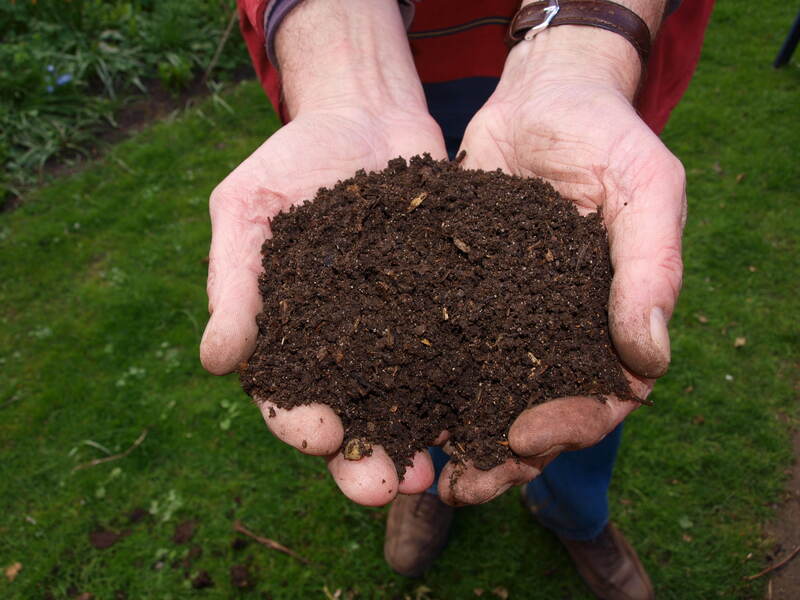
Photo Credit: Pxfuel
Everyone knows Austin likes to “keep it weird,” but you may not know that three ecoregions converge in the city. The Edwards Plateau, the Blackland Prairies, and the Post Oak Savannah Floodplains have different soil types.
Edwards Plateau
The Edwards Plateau covers most of West Austin, with 1st Street being the approximate dividing line. It has the following properties:
- Exposed and crumbled limestone
- High clay loam content
- Shallow soils
- Prone to runoff
Blackland Prairie
The Blackland Prairie covers Northeast Austin near I-290 and Southeast Austin in the Onion Creek area. You can expect to find the following properties:
- Wet, compacted soil
- Dense clay
- Deep soils with little to no rock content
Post Oak Savannah Floodplains
The Post Oak Savannah Floodplain covers East Austin, downtown through Del Valle. Expect to find:
- Flat terrain, rivers, and creek bottoms
- Loose, well-draining soil
- Prone to flooding
Factors Affecting Soil Quality
Soil type is only one factor affecting soil quality. Other factors include:
- Water and wind erosion
- Vegetation, including grass type, trees, and native plants.
- Construction
- Poor maintenance practices
To ensure your soil is in tip-top shape, get your soil tested every one to three years. Once you receive your results, you’ll better understand what your lawn needs, including fertilization.
Fertilization
Most lawns will need some fertilization, but too much is harmful. Here are a few fertilizing tips to help you feed your lawn and minimize damage:
- Select the correct fertilizer based on your soil results and grass type
- Wait until after the second or third mow to fertilize
- Irrigate after applications to dissolve the nutrients
- Never fertilize a dormant lawn
Nitrogen Needs by Grass Type
The average grass cultivar needs about 0.5 pounds of nitrogen per 1,000 square feet of lawn, but each grass type has different needs.
- Bermudagrass and Zoysiagrass: Require 0.5 to one pound of nitrogen per 1,000 square feet monthly.
- St. Augustinegrass: Apply two to four pounds of nitrogen per 1,000 square feet of lawn annually, or 0.5 to one pound of nitrogen per 1,000 square feet monthly.
- Buffalograss: Requires low to no fertilization. Apply up to two pounds of nitrogen per 1,000 square feet of lawn annually.
3. Best Watering Practices for Your Austin Lawn
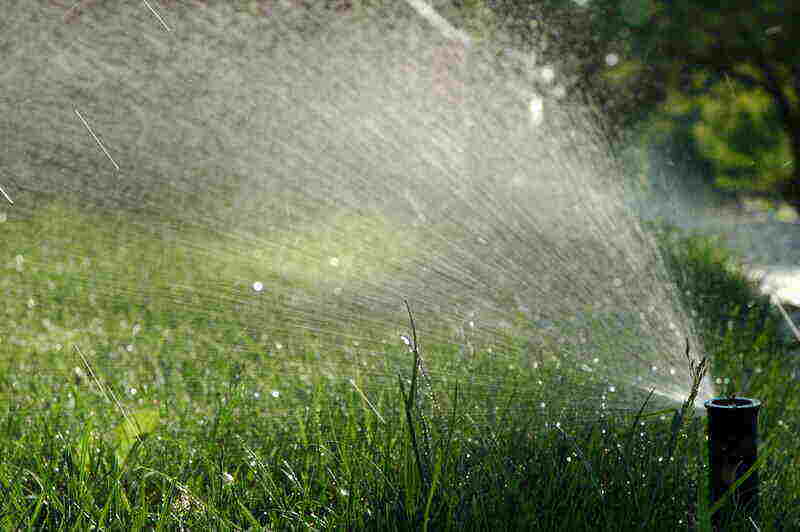
Photo Credit: UBC Micrometeorology / Flickr / CC BY 2.0
Your watering practices have a significant effect on your lawn’s health. While your grass and native plants are adapted to Austin’s USDA hardiness Zone, 8, they still face high temperatures, drought, and water restrictions.
Here are some helpful tips to get the most out of your watering practices:
- Water on designated days determined by your address
- Water one to two inches per week, including rainfall
- Soak your lawn once or twice per week in place of short, daily watering to soak the top four to six inches of soil, helping your plants and grass develop deep, drought-resistant roots
- Water between 4 a.m. and 8 a.m while the sun’s rays are weak and the wind is calm, minimizing evaporation and hindering fungal growth
- Consider investing in an automatic irrigation system to save you time and money while increasing the health of your lawn
Take a look at the recommended watering amounts for popular grass types in Austin:
| Warm-Season Grass Type | Weekly Watering Needs in Inches |
| Bermudagrass | 1.25 |
| Buffalograss | 1 |
| St. Augustinegrass | 1 |
| Zoysiagrass | 1 |
4. Best Mowing Methods for Austin Grass
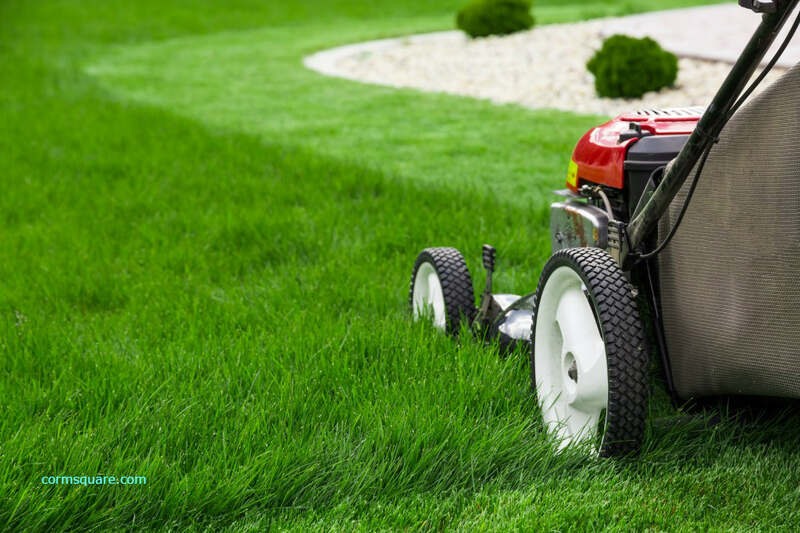
Photo Credit: Prasannanossam3 / Wikimedia Commons / CC BY-SA 4.0
To make a significant impact on the health of your lawn, mow like a pro. It is important to know what time to mow, how often to mow, and how high you should mow.
Here are some pro mowing tips to keep your lawn looking its best:
- Cut your grass at the recommended height: Cutting your grass too short leaves your lawn vulnerable to weeds, scorching, and dormancy.
- Sharpen mower blades frequently: Dull blades rip turfgrass, causing brown tips.
- Mow less than ⅓ of your grass’ length to reduce trauma.
- Cut your lawn regularly to encourage deep roots and thick growth.
- Leave grass clippings on the ground to use as mulch.
- Never mow when the grass is wet: Cutting wet grass rips grass blades and clogs your mower.
- Don’t mow during a drought: Cutting dormant grass causes damage.
- Don’t cut grass right after fertilization: The grass needs time to absorb the nutrients applied during fertilization.
- Vary your mowing pattern: Mowing in the same direction causes ruts. Varying your mowing pattern causes the turfgrass to grow straight.
- Never mow a diseased lawn:. Mowing flings diseased clippings around your healthy lawn, creating more disease. Like coughing without covering your mouth, lawn mowing diseased grass is a bad idea.
When to Mow Your Austin Lawn
Understanding when to mow is also critical to keeping your lawn green.
- The best time to cut grass is mid-morning, between 8 a.m. and 10 a.m. This window allows dew to evaporate. It also allows recovery time before the mid-day scorching sun is overhead. Early morning watering sessions reduce the risk of disease and fungus.
- The worst time of day to mow your lawn is early morning, before 8 a.m. The ground is still wet from the morning dew. Mowing wet grass tears blades, clogs mowers, and causes disease.
Mowing frequency changes with the seasons. Here’s an optimal mowing schedule for each season:
| Season | Mowing Frequency |
| Spring | Once per week |
| Summer | 1-2 times per week |
| Fall | Once every 7-10 days |
| Winter | Rarely, as needed |
Mowing Frequency Based on Grass Type
The largest factor affecting your mowing frequency is your lawn’s turfgrass cultivar. Here are the recommended summer mowing heights and frequencies for popular Austin grass types.
- Bermudagrass: Mowing height is one to two inches, and plan to mow your lawn weekly.
- St. Augustinegrass: Mow every seven to 10 days at 2.5 inches.
- Zoysiagrass: Mow every five to seven days, and the mowing height is one to two inches.
- Buffalograss: Mowing height is two to three inches, and mowing frequency is every seven to ten days.
5. Aerate and Dethatch Your Austin Lawn
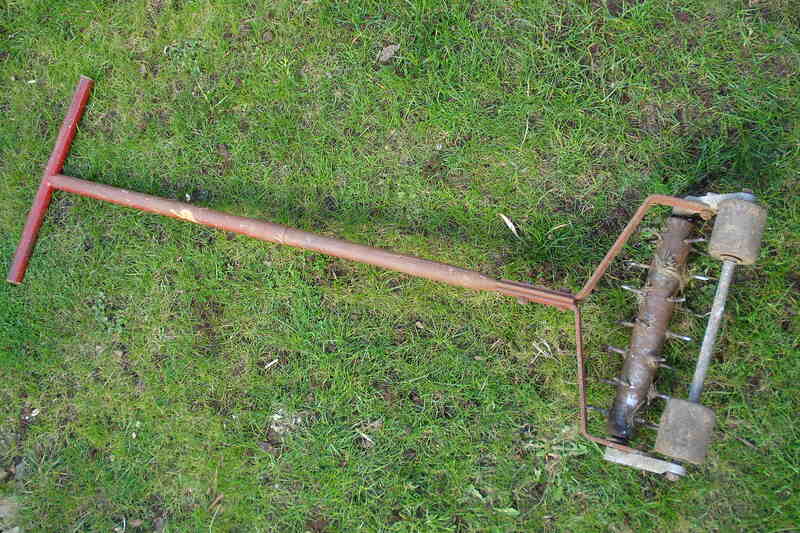
Photo Credit: allispossible.org.uk / Flickr / CC BY 2.0
Because Austin sits on the convergence of three different ecoregions, there are three distinctly different soil types. Two of the three soils are compacted, requiring regular aeration and turfgrass dethatching.
Lawn Aeration
Aeration involves poking small holes in the soil to allow air, water, and nutrients into the lawn. Doing this allows the roots to grow deeply, creating a stronger, more robust lawn.
Aeration relieves soil compaction. Compacted soils prevent proper absorption of air, water, and nutrients within the soil. Excess organic debris, like leaves and thatch, starve the roots of essential nutrients.
Dethatching
Thatch is a mixture of dead and living roots, and build-up occurs when turf produces waste faster than the environment can break it down. A little thatch is good as it helps insulate the soil and maintains moisture levels. However, thatch over ½ inch hinders water and nutrient absorption, starving your grass.
Unfortunately, many Austin lawns are prone to thatch build-up, because:
- Clay soil: Austin’s clay soil lacks thatch-decomposing organisms.
- Grass types: Aggressive, warm-season grass types create thatch build-up.
- Pesticides: Some pesticides reduce earthworm populations making a thatch problem worse.
- Fertilization: Excessive fertilization promotes thatch.
Some creeping grass types that are prone to thatch include:
- Bermudagrass
- Zoysiagrass
- Centipedegrass
- Texas Bluegrass
Dethatching Methods
If you need to dethatch, you have a few options. Liquid dethatching increases enzymes and thatch-eating organisms. If thatch build-up is just forming, try a dethatching rake. But if you moderate build-up or more, use a power-driven dethatcher, like a vertical mower.
6. Handle Austin Pests
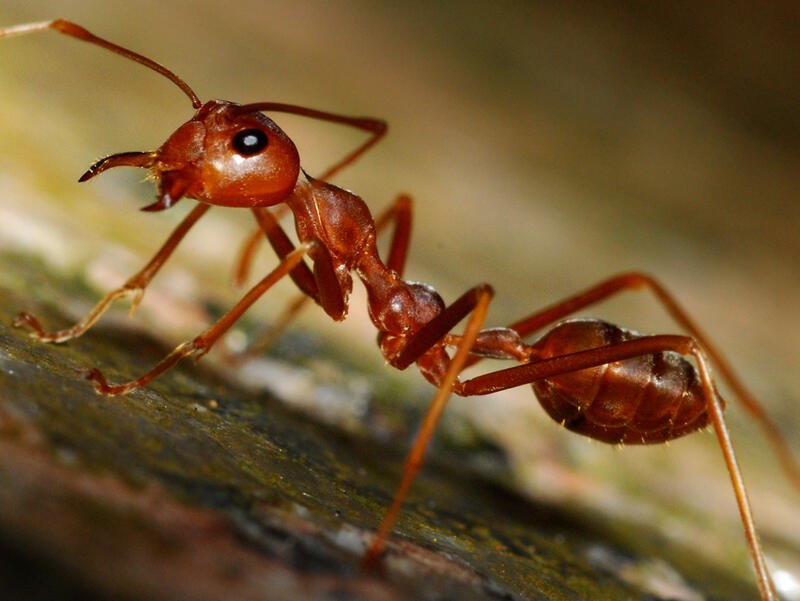
Photo Credit: William Cho / Wikimedia Commons / CC BY-SA 2.0
Bugs are the worst, and since Austin is in the South, we get our fair share of them. Some Austin bugs are nuisances, some carry diseases, and some will destroy your carefully crafted lawn and garden.
Here are some annoying, sometimes harmful pests you’ll encounter in your Austin backyard:
- American Cockroaches (Austinites often refer to them as water bugs)
- Fleas
- Mosquitoes
- Scorpions
- Spiders
- Termites
- Ticks
While these common pests are a nuisance and sometimes dangerous to your family and pets, they don’t affect your lawn. However, some lawn pests lay devastation, and you’ll need to intervene quickly.
Fire Ants
While most ants cause damage to your lawn by boring through the dirt, fire ants are awful, creating mounds and messing up your soil and turf. If you step on a mound, you’re in trouble. This invasive species latches on with its barbed mandibles and stabs you repeatedly with its venomous stinger, leaving itchy pus-filled bites that take days to heal.
Keep an eye out for dirt mounds in your lawn. If you spot one, apply fire ant bait, following the manufacturer’s directions. Unfortunately, some colonies abandon mounds and create new ones a few yards away. Consider hiring a professional to eliminate the pesky invaders.
Grubs
Grubs are small, fat, white, c-shaped, caterpillar-like insects you often find while gardening or digging. They’re actually beetle larvae, and they feed on your grass’ roots, causing brown spots and dead turf. If you’re unsure if your turfgrass problem is caused by grubs or a disease, tug on the grass blades. If they come out easily, you may have a grub infestation.
To get rid of grubs, use a grub-specific pesticide. Follow the manufacturer’s directions carefully, or you could harm your lawn. Additionally, apply nematodes or milky spores if you want a natural method. Dethatching and aeration help by giving the grubs less to eat.
Chinch Bugs
Chinch bugs are tiny black insects with white wings. While they may be small, they cause colossal problems. They suck the sap from the base and stolons of grass blades and inject a toxic substance that prevents the plant from transporting water. Soon, patches of your lawn will turn yellow, then brown, before dying. The damage will spread until you handle the infestation.
Because the damage often resembles drought stress or disease, you may not realize the problem immediately. Good lawn maintenance–dethatching, aeration, and not overwatering– help control chinch bugs. Applying preventative pesticides in the spring and targeted insecticides in the summer and fall will eliminate the pests.
Armyworms
Armyworms are not actually worms. They’re dark brown caterpillars with white, orange, or yellow stripes, and they can wreck your lawn in a few days by gobbling up grass blades. Armyworms are only two inches long but travel in large groups. They typically go unnoticed until the damage is severe.
The best way to prevent armyworms is applying preventative, commercial-grade pesticides and maintaining your lawn. Armyworms prefer a dense, over-thatched, moist lawn, so a well-maintained lawn eliminates their preferred habitat.
Pest Vulnerability and Grass Type
Some grasses are more susceptible to pests than others. Here’s what you can expect from common Austin grasses:
- Bermudagrass: Low pest resistance; prone to white grubs, hunting billbugs, mole crickets, armyworms, and sod webworms
- St. Augustinegrass: Low tolerance; prone to chinch bugs, cutworms, mole crickets, grass loopers, armyworms, webworms, and grubs.
- Zoysiagrass: High resistance; occasionally prone to mites, grubs, mole crickets, hunting billbugs, armyworms, chinch bugs, or sod webworms
- Buffalograss: High resistance; can be prone to mealybugs, buffalograss webworms, mites, short-tailed crickets, and chinch bugs
Irrigate and mow your lawn twenty-four hours before insecticide applications. Use a broad-spectrum, non-repellent insecticide containing carbaryl or pyrethroid to treat affected areas. Apply preventative treatments in May before the heat of summer sets in and then another in June.
7. Deal With Austin Turfgrass Diseases
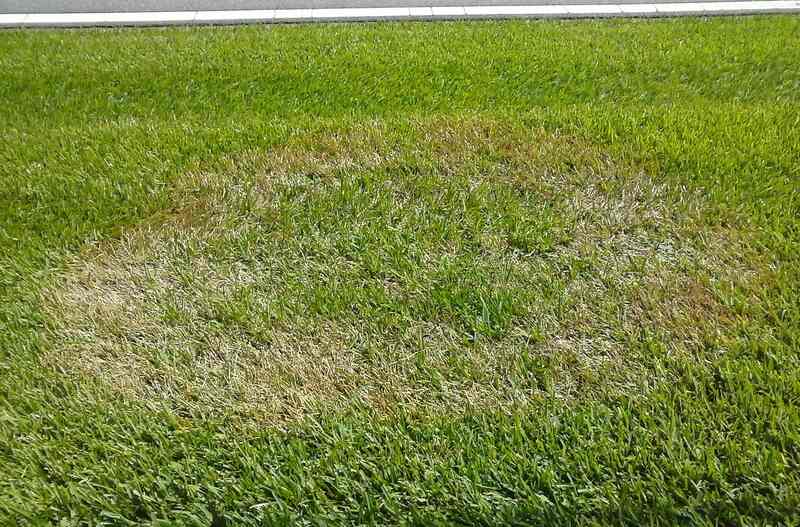
Photo Credit: Scot Nelson / Wikimedia Commons / CC0 1.0
Lawn diseases are not fun to deal with, and if you’re an Austin homeowner, you may know this from personal experience. They’ll turn a stunning lawn into a brown, patchy mess.
Lawns catch a disease when a trio of factors occur:
- The Grass Type: Some grass types are more vulnerable to turgrasses diseases than others but no grass cultivar is immune to disease.
- The Disease: Most lawn diseases are fungal, but there are also bacterial and viral lawn diseases caused from soils, winds, or animals.
- The Environment: Most lawn diseases, especially fungi, prefer temperatures above 70 degrees Fahrenheit during the day and 55 degrees at night.
Let’s look at each of these a little closer:
Grass Type
- Bermudagrass: High resistance; can be prone to spring dead spot, dollar spot, leaf spot, large patch, or sheath spot
- St. Augustinegrass: Low resistance; prone to gray leaf spot, large patch, and take-all root rot
- Zoysiagrass: High resistance; can be prone to large patch, root decline, spring dead spot, rust, curvularia, and leaf spot
- Buffalograss: High resistance; can be susceptible to bipolaris leaf spot
Disease Type
- Brown Patch: When night temperatures drop below 68 degrees Fahrenheit, and leaves are wet, this fungal disease may move in. Also known as smoke ring for its gray-purplish bordered ring. The disease rarely affects grass roots but will infect the blades and leave brown patches in your lawn.
- Take All Patch: Most active with moderate temperatures and moist grass. Take all patch is a fungal disease that causes enormous problems. The disease devastates large sections of turfgrass and is difficult to control. First, you may notice yellowing leaves and darkening roots. Eventually, your lawn will thin as the roots and stolons turn black and die.
- Dollar Spot: The fungal disease appears in spring through fall. Dollar spot appears as round, brown, silver dollar-sized circles and is active in moist periods of days and nights when temperatures are below 70 degrees Fahrenheit. It spreads by water drainage, mowers, and foot traffic. Moisture must be present on the leaves for the disease to develop.
- Gray Leaf Spot: Gray leaf spot develops during spring and early summer. The fungus causes oval tan lesions with brown or purplish borders on the grass blades.
- St. Augustine Decline (SAD): This incurable, viral disease only affects St. Augustinegrass and centipedegrass. The blades appear spotty, yellow, and weak, and stolon growth slows. The disease initially looks similar to a nutrient deficiency or insect issue, but when there’s no improvement after treatment, you know it’s SAD.
The Environment
Most diseases need daytime temperatures above 70 degrees Fahrenheit and nighttime temperatures above 55 degrees. They also need moisture from dew, irrigation, or rainfall to infect the blades. Lastly, stressed grass is easier to infect and a strong, healthy lawn is more resistant to attack.
Unfortunately, we can’t control the weather, but we can take steps to reduce stress and encourage growth. Here are some key tips to encourage a strong lawn:
- Water: Water your grass between 6 a.m. and 8 a.m., following the guidelines for your grass type.
- Mow: Mow your lawn around 10 a.m. This allows morning moisture. Follow the guidelines for your grass type’s mowing height and frequency.
- Applications: Test your soil to understand the correct amount of fertilizer, keep vigilant for pest problems and disease invasion, and act swiftly to take them out.
The Solution
Because most lawn diseases are fungal, use a fungicide to eliminate problems. Be sure to follow the manufacturer’s directions. Too much fungicide will burn your grass, and too little won’t be effective.
If you’d rather treat the fungus naturally, there are several solutions:
- Baking soda
- Dish soap
- Hydrogen peroxide
- Vinegar
- Lemon juice
8. Wipe Out Austin Weeds
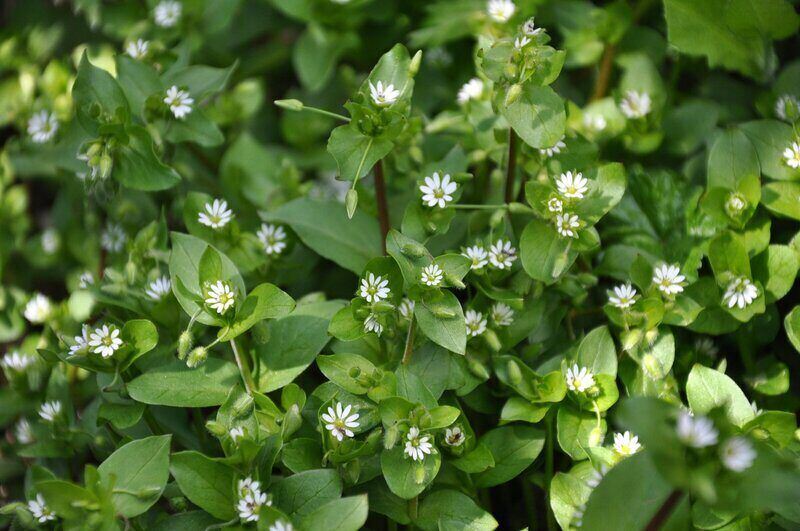
Photo Credit: Lazaregagnidze / Wikimedia Commons / CC BY-SA 4.0
Like diseases, weeds love an unhealthy lawn. If you see weeds, some underlying problems include low-nitrogen, imbalanced pH, and thinning turf. Weeds suck up vital nutrients, water, and sunlight from your turfgrass while simultaneously creating an ideal environment for pests and diseases. To control weeds, maintain a healthy lawn with routine maintenance.
There are two ways to control weeds in your lawn: chemical treatments and hand pulling. Pulling weeds by hand is the safest removal method, but it isn’t always the best. Be sure to identify the type of weed you are dealing with before selecting your removal method.
Follow these summer weeding tips:
- Use targeted post-emergent herbicides to wipe out weeds you can see
- Spray herbicides sparingly
- Hand-pull weeds or use a dandelion fork to remove broadleaf weeds with taproots
- When in doubt, pull your weeds by hand instead of using chemical treatments
Common Austin Weeds
Before you blink, weeds take over and ruin your gorgeous green grass. Here are five common Austin weeds:
- Annual sow thistle: Resembles dandelion; grows along roadsides and in lawns and gardens; attract and harbor pests
- Chickweed: Grows in a thick mat and is distinguishable by its small, smooth, pointed leaves and clusters of tiny white flowers; sucks nitrogen from the soil
- Nutsedge: Resembles grass; hand-pulling nutsedge creates new plants; often requires multiple treatments
- Smooth Crabgrass: Low-growing with dull green leaves; tolerates mowing
- Spotted Surge: Upright groundcover with small, dark green, oval leaves with a dark red to purple spot in the middle; skin irritant; toxic to some animals.
Check out our guide covering the 12 worst weeds in Austin to learn more.
Grass Type Vulnerability
Some grass types are more resistant to weeds than others. Check out the most common Austin grass types:
- Bermudagrass: weed-resistant because of its aggressive growth
- St. Augustinegrass: well-maintained St. Augustine grass stands up well against weeds
- Zoysiagrass: the most weed resistant because of its thick growth habit
- Buffalograss: susceptible to weed infestations, including crabgrass, foxtail, henbit, dandelions, and chickweed
FAQ About Summer Lawn Care in Austin
Lawn maintenance can be overwhelming, but there are some steps you can take to create a low-maintenance Austin lawn that will save time and money.
• Xeriscape: low-maintenance landscaping emphasizing water conservation
• Rock Garden: little to no maintenance hardscaping
• Native plants: adapted to Austin’s climate, requiring little care
• Hardscapes: reduce green vegetation with functional hardscapes like a fire pit, patio, or pergola
• Automatic Irrigation: set-it-and-forget-it smart irrigation saves times and money and conserves water
• Mulch: reduces weeds
Organic mulch needs to be replaced yearly. Inorganic mulch, like gravel or rubber, needs to be replaced every 5-10 years.
In Austin, plant grass seed in March or April. Spring planting helps avoid late-season frost and gives the seed time to germinate before the summer heat sets in.
Professional Austin Summer Landscape Maintenance
Summer is the perfect time for lounging on Lady Bird Lake, tubing the Comal River, backyard barbecuing, and pool partying. It’s also the time for rapid plant growth and lawn maintenance. Instead of sweating in the Austin heat, let Wikilawn match you with a local lawn care professional who will take care of your lawn so you can get back to enjoying your summer.
Main Image Credit: Texas, Austin / dszc / Canva Pro / License